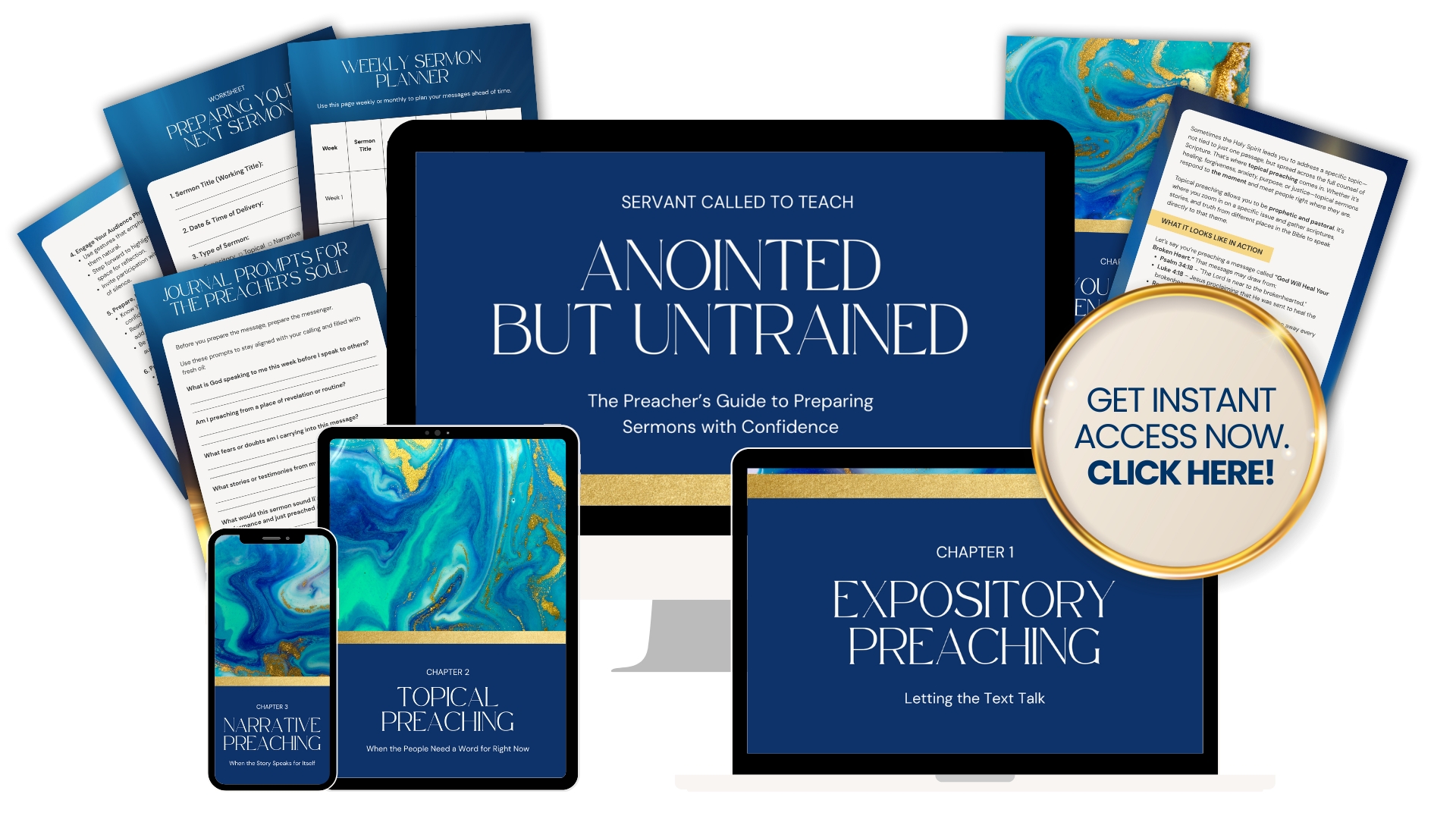How to Prepare a Sermon: A Step-by-Step Guide for Preachers
Preaching is one of the greatest responsibilities a servant of God can carry. Every week, countless pastors, leaders, and preachers step into the pulpit with a holy assignment: to bring God’s Word with clarity and power. Yet, if you are honest, sermon preparation can sometimes feel overwhelming.
If you have ever wondered how to prepare a sermon for the first time, you are not alone. Many preachers wrestle with scattered notes, last-minute panic, or a fear of not connecting with their audience. The good news is this: sermon preparation does not have to be complicated. With the right steps, you can consistently prepare Spirit-led, clear, and impactful messages.
This guide will walk you through how to prepare a sermon from start to finish. Whether you are preaching this Sunday or planning months ahead, these steps will give you a proven framework to approach sermon prep with confidence.
Step 1: Start with Prayer
Every great sermon begins on your knees. Before diving into study, pause and seek God’s guidance. Ask the Holy Spirit to open your eyes to truth, to soften your heart to hear His voice, and to prepare your spirit for what He wants to say through you.
Prayer reminds us that preaching is not merely about words but about power. As Paul wrote, “My message and my preaching were not with wise and persuasive words, but with a demonstration of the Spirit’s power” (1 Corinthians 2:4).
If you are learning how to prepare a sermon for the first time, remember this: prayer is your first and most important step.
Step 2: Study the Text Deeply
The foundation of every sermon is Scripture. Once you have chosen your passage, study it with care and attention.
Ask three key questions:
What does the passage say? (Observation)
What does the passage mean? (Interpretation)
How does this passage apply to life today? (Application)
Practical tools that can help:
Study Bibles (ESV Study Bible, Life Application Study Bible)
Bible apps and software (Logos, Blue Letter Bible, Bible Gateway)
Concordances and commentaries (Matthew Henry, NIV Application Commentary)
This step is especially crucial if you are figuring out how to prepare for preaching a sermon for the very first time. Without strong study, you may share opinions instead of God’s truth. Deep study ensures your sermon is rooted in Scripture and faithful to the text.
Step 3: Identify the Big Idea
A sermon without a central truth is like a compass without a needle. People may remember your stories or jokes, but they will not remember the message.
Ask yourself: What one truth does God want my congregation to walk away with? This is often called the “Big Idea.”
Example: From John 15:5 → “Apart from Christ, we can do nothing.”
When you know your Big Idea, every illustration, application, and transition in your sermon will support it. This is one of the keys in learning how to prepare a sermon that actually impacts lives.
Step 4: Build a Clear Outline
Now that you know your Big Idea, it is time to organize your content into a flow your audience can follow.
Here is an example of a sermon outline that many preachers use:
Introduction: Capture attention, state the Big Idea, and set expectations.
Point 1: Scripture → Explanation → Application.
Point 2: Scripture → Explanation → Application.
Point 3: Scripture → Explanation → Application.
Conclusion: Restate the Big Idea and issue a call to action.
There are three common outline styles:
Expository Outline: Walks through the passage verse by verse.
Topical Outline: Explores a theme across multiple Scriptures.
Narrative Outline: Uses storytelling to reveal biblical truth.
Your outline is your map. Without it, your sermon can feel scattered. With it, your listeners will track with you from start to finish.
Step 5: Add Illustrations and Applications
A sermon without illustrations can feel dry. Illustrations make the truth concrete and memorable. Applications show your audience how to live it out.
Types of illustrations you can use:
Personal stories from your own life or ministry.
Biblical stories that parallel your point.
Everyday situations your audience can relate to.
Quotes or testimonies that reinforce the message.
For every point, aim to include at least one illustration and one application. Ask, “How does this truth change how we live on Monday?”
This practice will transform your sermons from lectures into life-changing messages.
Step 6: Practice and Prepare Your Heart
Many preachers make the mistake of preparing content but not preparing themselves. Rehearsing is just as important as writing.
Here are a few tips:
Preach through your outline out loud at least once.
Time yourself to make sure you fit the slot you are given.
Mark where you will pause, emphasize, or invite response.
Most importantly, pray again before you deliver. This is how you step into the pulpit ready and Spirit-filled. If you are still learning how to prepare for preaching a sermon, this final step is what takes you from nervous to confident.
Common Mistakes to Avoid
Overcomplicating the message. Keep your sermon focused on one main truth.
Skipping prayer. Study without prayer may inform, but it will not transform.
Neglecting application. Without application, sermons remain theory instead of practice.
Copying without conviction. It is fine to look at resources like ready to preach sermon outlines, but never preach something you have not first lived and owned yourself.
Bonus Tip: How to Prepare a Sermon in 24 Hours
Sometimes emergencies happen. You may be asked to preach on short notice. Here is a quick process you can use in just one day:
Pray for focus and clarity.
Choose one short passage.
Identify one Big Idea.
Build a simple 2–3 point outline.
Add one strong illustration per point.
Preach with passion and dependence on the Spirit.
This is not the ideal way to prepare, but it can be effective when necessary.
FAQs About Sermon Preparation
-
Start small. Choose one passage, identify one Big Idea, and build a simple outline. Over time, you will grow more confident.
-
Yes, but treat them as a starting point. Use them for structure, then add your own study, illustrations, and applications.
-
Many preachers spend 8–12 hours per message, but it depends on your schedule and tools. Consistency is more important than perfection.
Ready to Preach?
Now that you know how to prepare a sermon, it is time to put it into practice. Whether you are just starting and wondering how to prepare a sermon for the first time, or refining your craft after years of preaching, these steps will guide you to prepare messages that are clear, Spirit-led, and impactful.
And if you want more help, we have created ready to preach sermon outlines along with templates, delivery prompts, and a full sermon planner inside our Companion Bundle. These tools will save you time and give you the confidence to step into the pulpit fully prepared.
If you want to take your sermon preparation to the next level, check out Anointed But Untrained: The Preacher’s Guide to Preparing Sermons With Confidence. It includes sermon templates, planners, and practical tools designed to help you prepare effectively every week.





